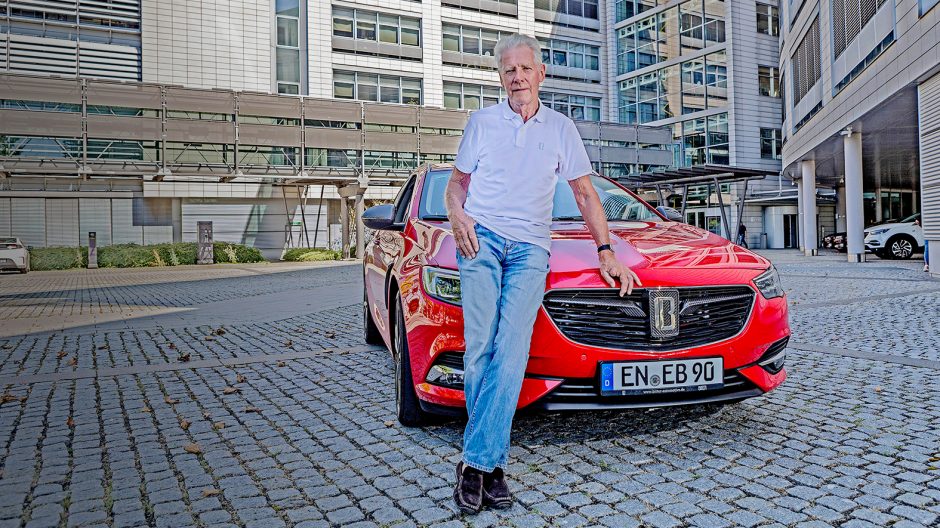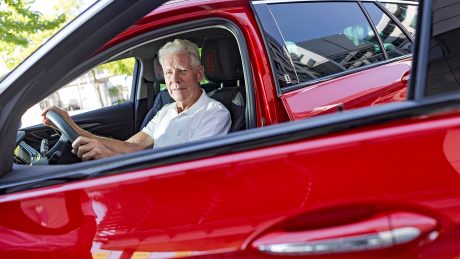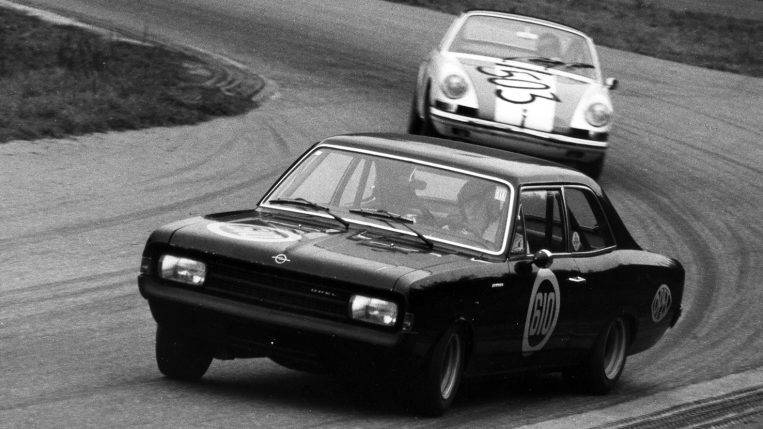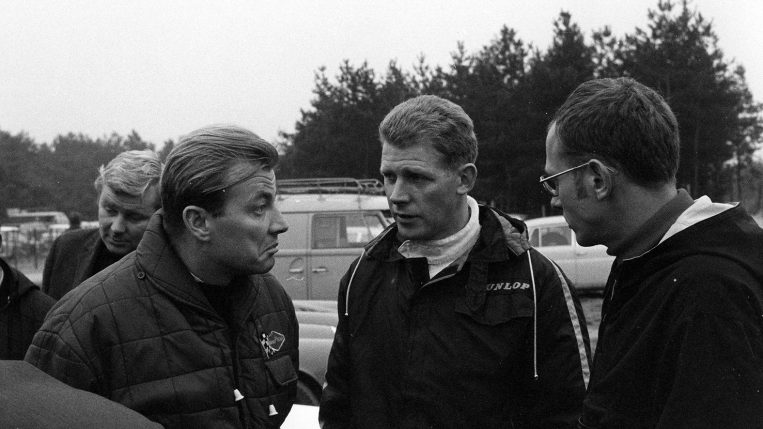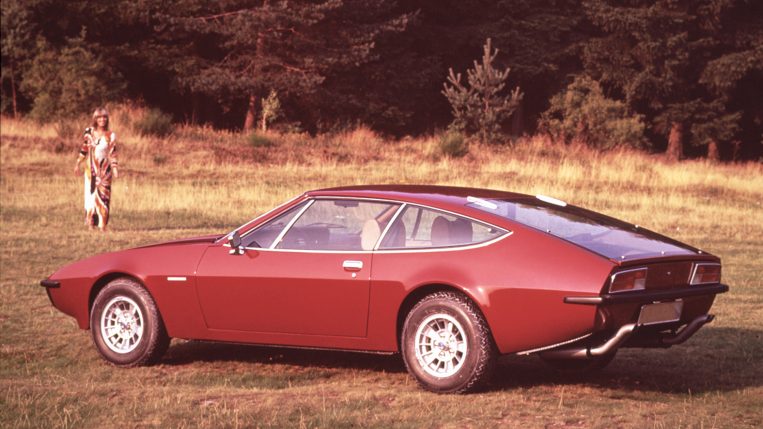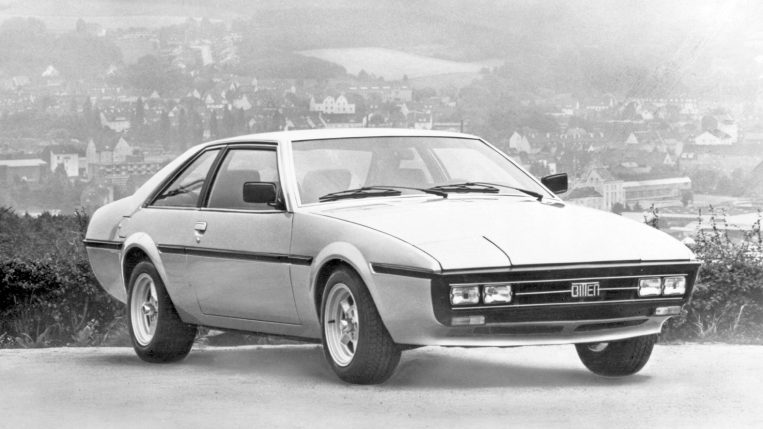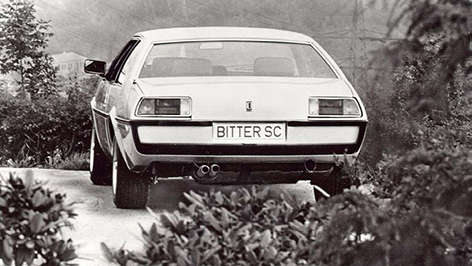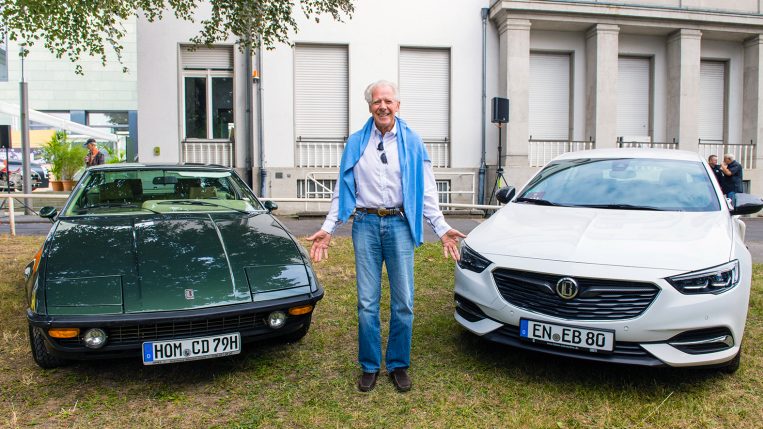He is alert with a sharp mind and a clear, firm voice. You’d hardly believe that Erich Bitter just turned 85 last Saturday, on 11 August. He invited many friends and associates to celebrate his birthday at his hometown of Schwelm, a small city in western Germany. The former racing driver served up car-themed sliced cake topped off with a cherry, created by Erich personally.
Opel Post: Hello, Mr. Bitter. You celebrated your 85th birthday on Saturday. What was the favorite gift you received?
Erich Bitter: I gave myself a modified Cascada, which is probably the best looking Opel I’ve ever owned. The interior is second to none, right up there with a Rolls Royce. The Cascada joins the ADAM, Mokka X, Insignia Grand Sport, and Sports Tourer as the fifth modified Opel in our portfolio.
You’ve collaborated with Opel for nearly 50 years. How did you first come to work with Opel?
It was more by chance. In the autumn of 1968, Bob Lutz, who would later go on to serve as Head of Opel, asked me to team up with a group of Opel engineers to build a racing version of a Rekord C, better known as the Black Widow. I tested the car on the Hockenheimring over two days and later competed in two races in it. Those were the only ones that the Black Widow would ever take part in.
Why only two races?
The Black Widow should never have been allowed to enter races under an AMA (editor’s note: Automobile Manufacturers Association) agreement which, in 1957, placed a ban on factory-supported racing that applied to all U.S. carmakers. With the ban, the AMA was seeking to distance itself from any responsibility for illegal street racing. That made it extremely difficult to get the car entered in races. Even when we did manage that, I was forced to start at the back of the pack in the final race of the Group 5 touring car series, though I did end up finishing third. Needless to say, that drew a lot of attention, and Opel management immediately withdrew the Black Widow from competitive racing.
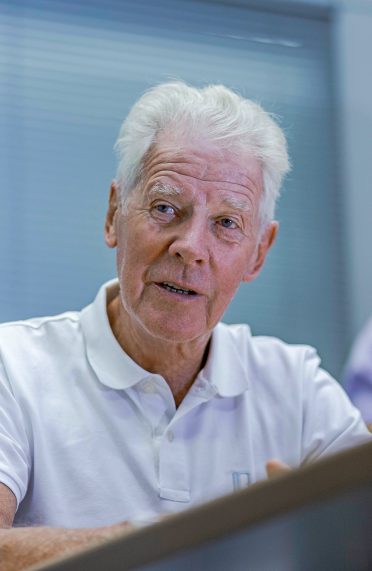
Visiting Rüsselsheim: Erich Bitter found time for an interview with Opel Post at the Opel headquarters.
–––––
“I gave myself a modified Cascada, which is probably the best looking Opel I’ve ever owned.“
–––––
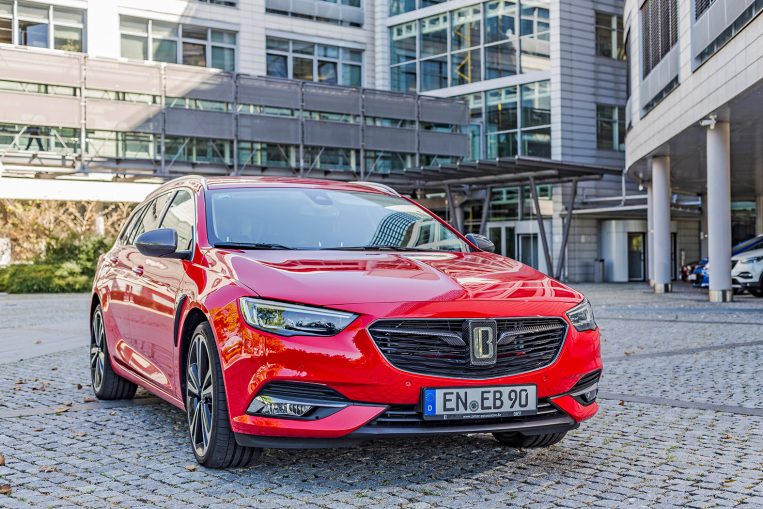
Bitter ‘B’ replaces the Opel lightning bolt: The Bitter Edition, built on a modified Opel Insignia, features an exclusive design..
A short time later you ended your racing career and designed the Bitter CD, which remains a legend to this day. How did you get the idea for it?
I asked Bob Lutz, who was now Director of Sales at Opel, if I could rebody the Diplomat. The V8 Diplomat was a great car. Lutz sold me the mass-production technology, and we developed the Bitter CD, which we built in partnership with Baur GmbH in Stuttgart and subsequently unveiled at the IAA in 1973. Then came the oil crisis, causing us to lose a lot of orders. Fortunately, the embargo was soon lifted, much to the relief of the automotive industry as a whole. After that, we started selling the cars ourselves, among others to high-profile buyers in Germany like Paul Breitner, Karl-Heinz Rummenigge, Rosi Mittermaier, and Heino. Sales were strong. All told, we ended up making exactly 395 Bitter CDs.
Why didn’t you sell more?
Since we built our cars based on mass-market models, we were reliant on Opel. When Opel stopped producing the Diplomat in the summer of 1977, we had enough parts in stock to continue making the CD for about two more years. In this time, we had to design a new car based on another Opel model. We opted for the Senator A and released the Bitter SC in the early 1980s.
What made the successor to the CD so special?
Though the CD was great success, we sold roughly 50 percent more SCs. For whatever reason, we were able to sell it in the States for around $100,000, about three times more than we could in Germany. Besides that, nothing much changed. Like the CD before it, the SC took its styling cues from Italian-designed cars, while it continued to be an Opel under the skin. We never needed to change Opel’s internal technology as it has always lived up to our standards. And while I maintain contact with other manufacturers, my preferred partner was and continues to be Opel.

Popular among soccer stars: Jürgen Grabowski (left) and Bernd Hölzenbein (right) with their Bitter CDs and its designer, Erich Bitter.
–––––
Bitter in person
Erich Bitter, born 1933 in Schwelm, was the first German cycling professional in the 1950s, between 1959 and 1968 he was a successful motorsport racer, mainly at circuit and long-distance races. Later on, he made his mark as an importer und manufacturer of race clothing and gear. As a car developer – mostly based on Opel models – he creates the legendary Bitter CD, amongst others. In addition, he is an enthusiastic runner and a passionate painter.
–––––
- Out on the Hockenheimring: Most other drivers on the track never saw anything but the back of the car that was fitted with a 190-hp, four-cylinder engine.
- Analyzing the race: Erich Bitter (center) standing on the sidelines at the race at the Hockenheimring.
- Designed on the basis of the Diplomat B: 395 Bitter CDs were produced between 1973 and 1980.
- Successor to the CD: The Bitter SC was based on the Senator A. Production started in 1981.
- Shared inspiration: Like the CD before it, the SC’s body is heavily influenced by Italian designs.
- Legends at the Opelvillen: Erich Bitter poses with the venerable Bitter CD and the new Bitter Edition of the Insignia at the classic car meet-up.
You have followed Opel’s development for decades as a business partner. How have Opel cars changed and evolved over this time?
Opel has made massive improvements in recent years. The cars from Rüsselsheim are amazing. Nothing could convince me otherwise, and I’m not just saying that because I sell Opel-based cars. I’m glad to see that Opel has taken major steps to improve. If they continue on this path, Opel will be able to compete with anyone. Opel is different from other car manufacturers that can build any car they want and it will still sell, even if not every one of them is good. And while Opel makes great cars, people are still not fully aware of this. The key is appealing to people’s emotions, something that we are looking to do.
You recently launched a Bitter Edition of the new Insignia. What are your impressions of the Opel flagship?
The Insignia is a fantastic car. The 2.0-liter gas version with all-wheel drive is the best mass-market vehicle I’ve ever driven. It’s a joy to drive the Insignia because of the great ride it offers and how well it handles in corners. The engineers in Rüsselsheim have done a great job yet again.
Opel has been part of Groupe PSA for one year now. How do you view the acquisition, also as this relates to your company?
No question about it, Opel and Groupe PSA can both benefit from the arrangement. There are a number of synergies that can be leveraged – and that’s good for Opel, too. As a partner, I also see the move positively, because it’s important for a company to be able to plan for the future. And we can now thankfully do that with Opel.

Ubiquitous logo: Erich Bitter even has the Bitter ‘B’ logo on his polo shirt.
–––––
“The Insignia is a fantastic car. The 2.0-liter gas version with all-wheel drive is the best mass-market vehicle I’ve ever driven.“
–––––
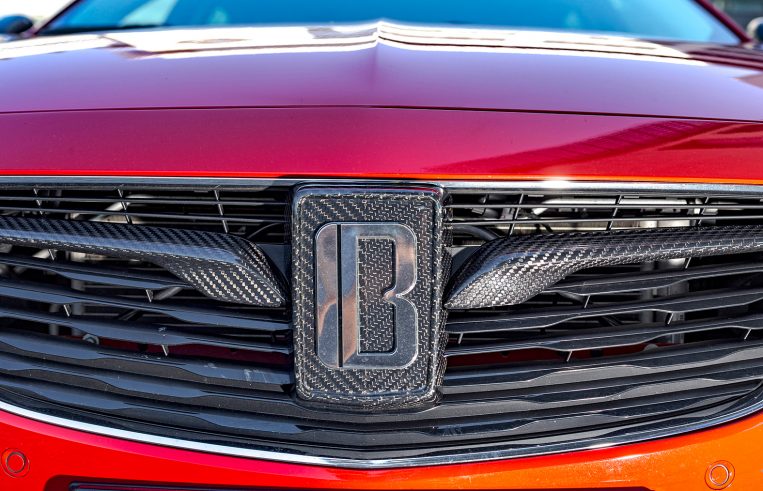
Distinctive grill: The Bitter ‘B’ badge and the optional carbon fiber fins add to the exclusive look of the Insignia’s front end.
What are your plans, specifically?
We are going on the offensive once more. In addition to the Bitter Edition, we will also be coming out with a new high-performance version of the Insignia. At the same time, we are focusing on e-mobility. At the moment we are working on a compact and affordable city car that meets our standards in terms of comfort and the features it offers. It should be available early next year. At long last, we will also be opening a showroom in the spring of 2019. It is currently being set up at the new Motorworld Manufaktur site in Metzingen, where our customers will have the opportunity to take a look at our cars in person. Teaming up with the Motorworld Group, we are planning additional showrooms at other sites to expand our presence across Germany.
Let’s turn to electric drives. Do you think they will replace conventional engines anytime soon?
While electric cars will clearly play a larger role in the future, gas and diesel vehicles will not be disappearing anytime soon. I don’t think that it will happen in my lifetime. People will certainly buy electric cars, though, especially in the cities.
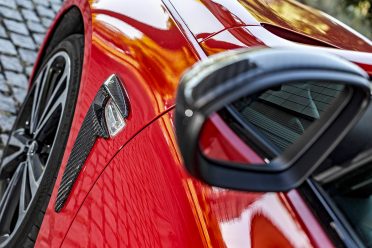
Individual touch: Carbon fiber elements in the side mirrors and around the side indicators mark out the Bitter Edition of the Opel flagship.
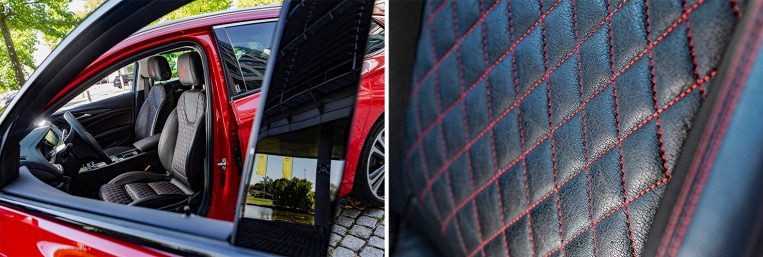
Exclusive: The seats in the Bitter Insignia are covered in water buffalo leather.
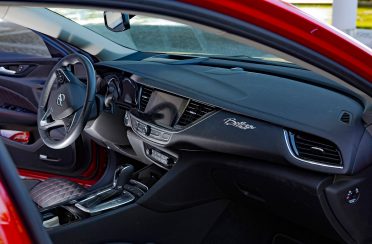
The cockpit: The Bitter logo can also be found on the passenger side on the dashboard.
To learn more about Bitter vehicles and the current models on sale, contact:
Erich Bitter (+49) 171-892-9821 / e-mail: erich.bitter@gmx.de; or
Markus Bitter (+49) 162-496-0464 / e-mail: info@bitter-cars.de.
To find the latest news, go to www.bitter-automotive.de and www.bitter-cars.de or visit the company pages on Facebook and Instagram.
Groupe PSA CEO Carlos Tavares is a passionate racecar driver like you. Have you had the pleasure of meeting Mr. Tavares?
Yes, a year ago in Dijon. A mutual friend introduced us at a race in which Mr. Tavares was taking part. He’s an exceptionally good driver. I could see that even though I was only watching from the sidelines. Racing drivers want to win every time, whether out on the track or at work. Having this mentality also helps him in his role as PSA’s CEO.
Is there anything the racecar driver in you would miss if gas and diesel engines were to disappear?
Definitely! The sound of the engine, for example. And I would miss the sensation and emotions associated with driving a car equipped with a 12-cylinder engine. The important role emotions play in the driving experience can be seen in the growing popularity of classic cars in recent years.
You’ve been running Bitter Automobile GmbH for close to five decades now. At 85, are you looking to slow down and take it easier?
My nephew, Markus Bitter, will take over the reins in the near future. Markus is the perfect person to lead the company. He loves cars, he’s got a business background, and he’s a great guy, too. Not much will change for me. Some say I should retire at my age, maybe buy a house in the mountains. Or go on walks. I do that every once and a while, too. But after a couple of hours, I have had enough. I’m not someone who can sit still, and this is not set to change.
Thank you very much for the interview!
August 2018
